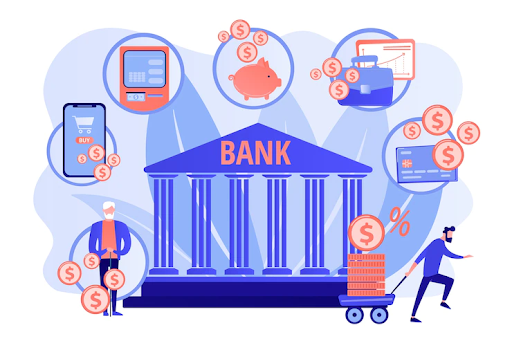Let's Discuss
Enquire NowEdge computing, the extended version of the cloud, is grabbing headlines in finance. Curious?
Most businesses today consider customer satisfaction as the pinnacle of their success. For an industry like banking, where customer service is crucial, edge computing can be extremely advantageous. Although Edge is nothing new to this sector, there is a significant surge in its usage at present. Let us explore what makes this technology a revolutionary change for banking.

Data protection and sovereignty
Banks have a lot of sensitive information, which in cloud computing, travels across borders, making it susceptible to breaches. Sending large amounts of data to centralized hubs might increase backhaul costs and decrease possible ROI. Edge computing can help close the gap by allowing sensitive data to be processed within national boundaries while minimizing the amount of data transmitted to the cloud.
Edge also helps banks protect customers from problems that may arise at the point of transaction, such as ATMs. Facial recognition software can be used in real-time at ATMs to detect potentially fraudulent activities and lockdowns, after which a notification can be sent to customers and other concerned authorities. An on-premise edge solution helps banks filter, analyze, and alert systems about suspicious behaviour to ensure that sensitive information does not get into the wrong hands.
Low latency and high data processing
Edge computing processes data near where it is stored rather than transferring it over great distances. This allows banks to link and automate communication between branches, data centres and the cloud, quickly and efficiently. It also implies that connections can be set up in seconds. This translates to quicker data processing and a more pleasant experience. Shifting data and workloads to regional data centers, in conjunction with 5G connectivity, enables devices, apps, and end-users to receive faster, low-latency replies. For financial institutions looking to provide highly tailored and responsive payment solutions, this has clear benefits.
Edge computing has the potential to make a significant difference in High-frequency algorithmic Trading (HFT). Many HFT arbitrage methods, for instance, focus on price disparities between the same asset traded on multiple exchanges. With edge, information explaining the discrepancy can be sent between exchanges at a faster pace, which ensures the arbitrage opportunity. For HFT firms that trade on the entirely decentralized currency market, this technology is extremely beneficial.
Personalized customer engagement
Edge can consolidate and simplify cloud-enabled networks while enhancing application performance for customers by offering a connectivity solution with a footprint in both cities and distant edge locations. Edge computing can provide transformational and highly personalized customer service. This technology encourages the development of chatbots using AI and ML algorithms that react to consumer enquiries without the need for human intervention. Integrated with Artificial Intelligence, necessary insights can be generated and analyzed to devise ways to improve customer experience. For instance, facial expression analysis can be deployed to detect customer sentiment. Retail banks can tailor their involvement with clients to a more personalized level. Edge capabilities promote appropriate financial products and services, and help design target-oriented campaign messages by integrating anonymized data and using mobile applications, near-field communications and location services.
While working with this technology, it is important to note the major concerns faced by it. To preserve bandwidth and cut down on latency, important data can wind up being ignored and destroyed. Edge computing reduces the quantity of data that needs to be protected at data centers, which enhances security, but it also raises questions about security at each localized point of the edge network. Since highly sensitive information is fed into and handled by sophisticated machinery, even a tiny error might give away vital information to hackers. Additionally, edge devices are typically harder to locate at the corporate level, making it challenging to keep track of localized devices that use company data and ascertain whether they are abiding by the enterprise network’s security policy. Devices with limited network visibility and authentication capabilities might be a difficulty for enterprises attempting to implement a zero-trust approach to network security. Edge computing requires a significant upfront investment. Currently, there is no solid evidence to support how long it will take for an organization to recoup its initial costs or whether the investment is worthwhile.
However, this technology is a worthy choice to implement for businesses looking forward to expanding their horizons to stay one step ahead. Recent statistics state that the edge computing industry is expected to grow to US$43.4 billion by 2027. Switching to this technology can not only ensure banks stay ahead of the competition but also help attract new clients.
Have a project in mind that includes complex tech? We can be your best partner. Connect with us here.
Disclaimer: The opinions expressed in this article are those of the author(s) and do not necessarily reflect the positions of Dexlock.



